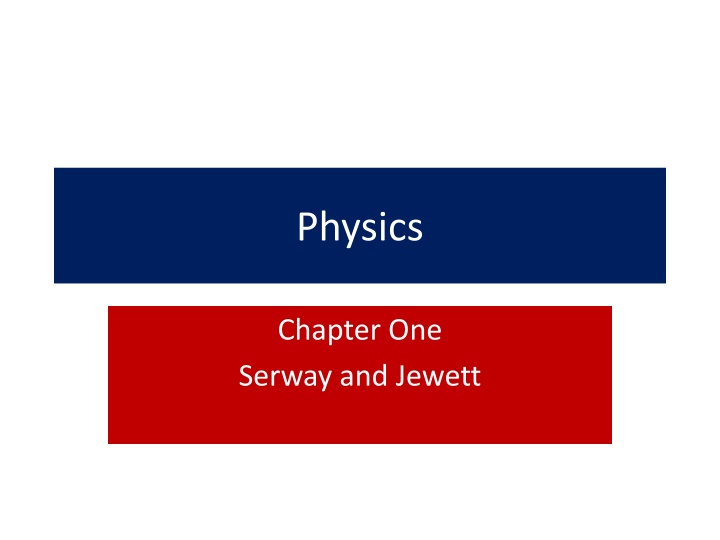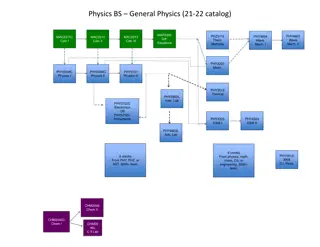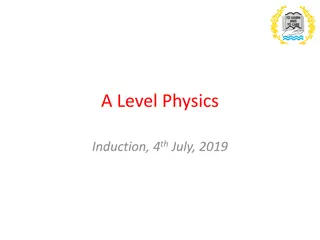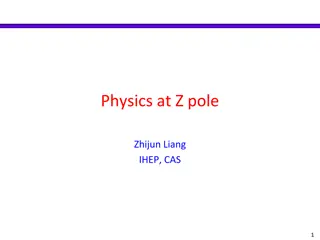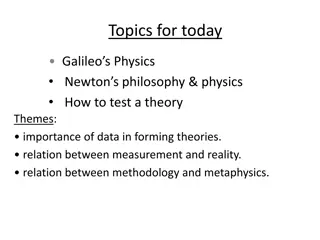Physics
This content delves into the essential components of physics measurements, including magnitude, units, uncertainty, significant digits, and direction for vectors. It explains how each element contributes to accurate measurements and discusses the importance of significant figures in representing uncertainty. The concept of directions in vector quantities is also explored, highlighting the diverse ways in which measurements can be expressed.
Uploaded on Feb 24, 2025 | 2 Views
Download Presentation

Please find below an Image/Link to download the presentation.
The content on the website is provided AS IS for your information and personal use only. It may not be sold, licensed, or shared on other websites without obtaining consent from the author.If you encounter any issues during the download, it is possible that the publisher has removed the file from their server.
You are allowed to download the files provided on this website for personal or commercial use, subject to the condition that they are used lawfully. All files are the property of their respective owners.
The content on the website is provided AS IS for your information and personal use only. It may not be sold, licensed, or shared on other websites without obtaining consent from the author.
E N D
Presentation Transcript
Physics Chapter One Serway and Jewett
Chapter One What is a physics measurement? It is a combination of 1) Magnitude 2) Units (almost always) 3) Uncertainty (or Significant Digits) 4) Direction (for vectors)
Magnitude Magnitude is the quantitative part of any measurement; it itself has no units included and generally needs some combination of uncertainty, units, and direction to fulfill the requirements of a true measurement i.e. for the example: Velocity = 14 2 m/s NW The magnitude of this measurement is 14.
Units Units are based on the SI version of the metric system. The base units for mechanics are: m, kg, s. Other units can be built out of combinations of these Prefices are used to denote orders of magnitude: Em Pm Tm Gm Mm km m mm m nm pm fm am
Uncertainty Uncertainty is part of any real physical measurement: Length = 16 meters 2 meters There is a formal method for dealing with uncertainties in formulae which we will use in next week s lab
Significant Digits Significant digits are a shorthand for the uncertainty implicit in a physical measurement: the last significant digit is approximately equal to the uncertainty. L = 14.6 m is approximately L = 14.6 m 0.1 m You should never have more significant digits in the solution than you did to start with. 3 significant digits is almost always enough.
Significant Digits Continued 10 and 10,000 both have one significant digit. 10.0 has 3 significant digits. 10,000.00 has 7 significant digits. There are rules for propagating significant digits: 1 + 1.0 = 2 not 2.0 since 1 is one significant digit while 1.0 has two significant digits. The smallest number of significant figures always dominates.
Direction All vector quantities have a direction as well as magnitude, uncertainties and units May be expressed in (x,y,z) cartesian coordinates (i.e. N, W, E, S, up, down) May also be expressed in spherical or cylindrical coordinates (i.e. latitude, longitude, elevation) We will use both 2-d and 3-d vectors
